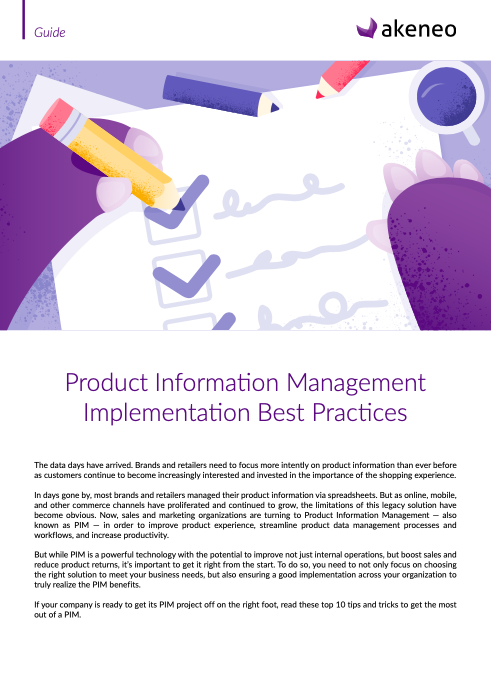Product Information Management Implementation Best Practices

The data days have arrived. Brands and retailers need to focus more intently on product information than ever before as customers continue to become increasingly interested and invested in the importance of the shopping experience.
In days gone by, most brands and retailers managed their product information via spreadsheets. But as online, mobile, and other commerce channels have proliferated and continued to grow, the limitations of this legacy solution have become obvious. Now, sales and marketing organizations are turning to Product Information Management — also known as PIM — in order to improve product experience, streamline product data management processes and workflows, and increase productivity.
But while PIM is a powerful technology with the potential to improve not just internal operations, but boost sales and reduce product returns, it’s important to get it right from the start. To do so, you need to not only focus on choosing the right solution to meet your business needs, but also ensuring a good implementation across your organization to truly realize the PIM benefits.
If your company is ready to get its PIM project off on the right foot, read these top 10 tips and tricks to get the most out of a PIM.